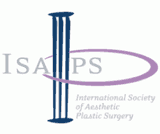Tissue glue in plastic surgery.
 A
new surgical close-bodied technique (tissue adhesive) dramatically
decreases the accumulation of liquids after a plastic surgery procedure.
A
new surgical close-bodied technique (tissue adhesive) dramatically
decreases the accumulation of liquids after a plastic surgery procedure.
Knowing that a beloved person has been submitted successfully to a plastic surgical intervention is a relief. seeing them however after the surgery with tubes in various parts of their body, is another story.
Those tubes are unfortunately a necessary villain. After the completion of the process their sections resemble an open wound. In the ideal case these layers of tissue which has disturbed the surgical procedure, should be repositioned very well one on top of the other, before the wound is stitched or clipped.
 Without
the success of the replacement, there will be accumulated liquid in the
wound. The accumulation of liquids is the figure of an enemy, because
when the tissues are separated from the liquids, we don’t know how they
will react.
Without
the success of the replacement, there will be accumulated liquid in the
wound. The accumulation of liquids is the figure of an enemy, because
when the tissues are separated from the liquids, we don’t know how they
will react.
When the tissue is not strong and there is an accumulation of liquids,
then tubes are the only way. The challenge is even bigger in surgical
procedures such as tummy tuck.
However, a new technology that became commercial available in Europe two
months ago, can change all this.
During the last two months, Dirk F. Richter (plastic surgeon and chairman of the Department Plastic Surgery in the Hospital Dreifaltigkeits, in Wesseling, Germany), has used surgical tissue adhesives, a product that can be the biggest revolution in plastic surgery for years.
 The
liquids are the best environment for the growth of bacteria and
infections. This new technique keeps the layers of the tissue in their
place and prevents the accumulation of liquid, decreasing the necessity
for draining through tubes.
The
liquids are the best environment for the growth of bacteria and
infections. This new technique keeps the layers of the tissue in their
place and prevents the accumulation of liquid, decreasing the necessity
for draining through tubes.
TissuGlu is a glue that was created for plastic surgery procedures and it is constituted of biocompatible material, lysine that emanates from urethane acid, that is ideal for a humid environment and can be analyzed and absorbed with success from the body and has been proved that it is five times more powerful than any other commercial available products, that are used in the union of soft tissues in surgical procedures.
 In
surgical operations where this TissuGlu was used, (the product is
delivered in a drawing of mesh, three drops each time on the open wound,
through a portable packing that releases the product automatically), the
accumulation of liquid was decreased dramatically.
In
surgical operations where this TissuGlu was used, (the product is
delivered in a drawing of mesh, three drops each time on the open wound,
through a portable packing that releases the product automatically), the
accumulation of liquid was decreased dramatically.
Up now, there did not exist a synthetic non toxic glue in the market that would be in the position to seal the internal layers of the tissue and be powerful enough to join the tissues and keep the liquids away from the accumulation.
The genesis of TissuGlu was a technology that was created through chemical engineering, by Eric Beckman, and surgeon, Michael Buckley. In 2004, this pair had proposed papers in order to build a company based on their surgical glue.
The next year, they met with Patrick Daly (47 years old, founder and directing adviser of product and medical programmer of Cohera Medical Inc, in which TissuGlu was created) , and afterwards, with the regional director of Ethicon Endo-Surgery, subsidiary company of Johnson & Johnson. Seeing the promise of the work of Beckman and Buckley, Daly abandoned his work in January 2006 and Cohera Biomedical Adhesives officially opened.
The investors were enthusiastic. In July 2006 Cohera Biomedical (the company changed its name in the spring of the same year) gathered 7.860.000 dollars from private individual investors in the first tour of its financing. In the second tour, in October 2008, it acquired $ 16.1 million. The third tour closes next month and it will be supposed to contribute more from 25 million dollars. At the end of December 2009, Cohera took the final publication of TissuGlu, after many years’ of research, growth and confrontation of comments of his customers in Germany, where it was submitted in successful human clinical trials.
This July TissuGlu received European Labeling CE, allowing the product
to be sold in all countries members of EU. With the sign of CE in hand,
Daly will seek the approval of FDA for TissuGlu and the work of the
first clinical trials to begin in the USA in 2012.
It forecasts the sale of product in the USA from the third quarter 2014.
Also TissuGlu decreases the post surgical dangers of infection that are
caused by the tubes. Richter marks that compilation of tissue of lesion
between 12 until 16 inches (roughly 30 with 40 hundredth) would take
regularly half an hour, while now they need only three to four minutes
with TissuGlu.
The product also provides an advantage of cost, with the restriction of time that is spent in the operating theatre. Apart from the preparation of the clinical trials of TissuGlu for the FDA, Cohera hopes to bring a second product to the market, a surgical glue of union of the intestine.
This welding was an objective for a lot of companies. Cohera realized that she created an exceptionally powerful product for its enterprises.
We use tissue adhesives for compilation of the skin from 2008 with excellent results.
More for plastic surgery on our web site: www.kapositas.com
and www.surgery.org













